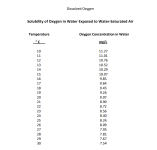Thanks James for the clear explanation. I've continued to be curious why, if I wait a few minutes, it starts drifting back towards pink?A buffered DPD indicator powder is added to a water sample and reacts with chlorine (HOCl and OCl-) to produce the pink color characteristic of the standard DPD test.
Ferrous ammonium sulfate (FAS) is then added drop by drop until the pink color completely and permanently disappears, signaling the endpoint of the reaction.
Ferrous ammonium sulfate is considered a "reducing agent" because it readily donates electrons in chemical reactions, meaning it can reduce other substances by causing them to gain electrons; this property is primarily due to the presence of iron in its +2 oxidation state (ferrous ion) which can easily be oxidized to the +3 state (ferric ion) by accepting electrons.
The chlorine is reduced to chloride and this causes chlorine to be released from the CYA molecule and the released chlorine is then available to react with the reagents.
This goes until all chlorine is consumed.
The release is fast enough so that all of the chlorine is measured in the test.
CYA not considered in Pool Math?
- Thread starter DougJack
- Start date
You are using an out of date browser. It may not display this or other websites correctly.
You should upgrade or use an alternative browser.
You should upgrade or use an alternative browser.
Correct, the HOCl and OCl- are the only molecules that react with organics and other oxidizable things.I take this to mean that FC that is immediately available for sanitizing is only the part that isn't bound, or about 5% of the measured DPD if you have unsaturated CYA.
However, as the HOCl and OCl- get used up, the chlorine atoms bonded to CYA are released so that you always have some free FC to oxidize and sanitize.
That can be due to combined chlorine or from oxygen in the air oxidizing the sample.I've continued to be curious why, if I wait a few minutes, it starts drifting back towards pink?
Thanks for the directionI think you will discover TFP Scholar is more reliable and less work than most other sources.
got itThat can be due to combined chlorine or from oxygen in the air oxidizing the sample.
Oxygen can oxidize N,N-diethyl-p-phenylenediamine (DPD).
The oxidized form of DPD is called Würster dye.
The amount of Würster dye that forms is proportional to the amount of oxidizer present.
The reagent for combined chlorine is iodide and this gets oxidized by combined chlorine or oxygen to iodine, which oxidizes the DPD into magenta Wurster dye.
If you have added the iodide, the oxygen in the air reacts very quickly due to how easily iodide is oxidized into iodine.

The oxidized form of DPD is called Würster dye.
The amount of Würster dye that forms is proportional to the amount of oxidizer present.
The reagent for combined chlorine is iodide and this gets oxidized by combined chlorine or oxygen to iodine, which oxidizes the DPD into magenta Wurster dye.
If you have added the iodide, the oxygen in the air reacts very quickly due to how easily iodide is oxidized into iodine.

Yes, chlorine bound to CYA shows up on the DPD-FAS test. As HOCl/OCl reacts with the DPD indicator dye by oxidizing it to the pink-colored Wurster dye, chlorine is continuously released from the CYA until it is exhausted. So the test measures the total amount of active chlorine (HOCl/OCl) and reserve chlorine bound to CYA (HCy-Cl).
I've noticed it without the iodide.Oxygen can oxidize N,N-diethyl-p-phenylenediamine (DPD).
The oxidized form of DPD is called Würster dye.
The amount of Würster dye that forms is proportional to the amount of oxidizer present.
The reagent for combined chlorine is iodide and this gets oxidized by combined chlorine or oxygen to iodine, which oxidizes the DPD into magenta Wurster dye.
If you have added the iodide, the oxygen in the air reacts very quickly due to how easily iodide is oxidized into iodine.
View attachment 629529
The oxygen dissolved in the sample can react with the DPD.If you boil a pot of water on the stove, you will notice the formation of gas bubbles before boiling happens.
These bubbles are the dissolved gasses like nitrogen, oxygen and carbon dioxide coming out of solution due to the heat.
The partial pressure of oxygen in air at sea level is approximately 160 mmHg.
This is calculated by multiplying the atmospheric pressure at sea level (760 mmHg) by the percentage of oxygen in air (approximately 21%).
(1.3 x 10^-3)(0.21)31,999 = 8.735 ppm Oxygen
8.735 ppm Oxygen = 0.00027297M.
0.00027297M Oxygen (O2) is equivalent to 19.355 ppm chlorine (Cl2).
Dissolved oxygen (O2) in water does not react with DPD (N,N-diethyl-p-phenylenediamine) quickly.
It does so very slowly and this is one reason that the sample can turn pink after turning colorless.
What would cause positive results using DPD when no chlorine is present in the sample?
Aug 6, 2022Knowledge
Title
What would cause positive results using DPD when no chlorine is present in the sample?
Summary
Positive interferences to Chlorine methods
Answer
Other oxidants such as bromine, iodine, ozone, chlorine dioxide, or hydrogen peroxide can react with DPD and cause false positives.
The most common interferent is oxidized manganese, which can be corrected for by treating the sample with potassium iodide and sodium arsenite.
Sunlight can react with the DPD indicator during the 3-minute reaction time for total chlorine; keep the sample covered during the reaction time if testing outdoors.
Aug 6, 2022Knowledge
Title
What would cause positive results using DPD when no chlorine is present in the sample?
Summary
Positive interferences to Chlorine methods
Answer
Other oxidants such as bromine, iodine, ozone, chlorine dioxide, or hydrogen peroxide can react with DPD and cause false positives.
The most common interferent is oxidized manganese, which can be corrected for by treating the sample with potassium iodide and sodium arsenite.
Sunlight can react with the DPD indicator during the 3-minute reaction time for total chlorine; keep the sample covered during the reaction time if testing outdoors.
Potassium monopersulfate (MPS or potassium peroxymonosulfate) is a non-chlorine oxidizer that will interfere in the total chlorine DPD test.
Some oxidizers like MPS and combined chlorine can slowly oxidize the DPD reagent resulting in a slow return to pink after going colorless.
I am not sure how much dissolved oxygen reacts with the DPD dye.
https://www.taylortechnologies.com/it/page/113/shocking-interference
Some oxidizers like MPS and combined chlorine can slowly oxidize the DPD reagent resulting in a slow return to pink after going colorless.
I am not sure how much dissolved oxygen reacts with the DPD dye.
https://www.taylortechnologies.com/it/page/113/shocking-interference
Last edited:
Hi James, one reason to tell the bot who it is, is that it structures the response it will give in a more technologically sound manner. I want to avoid a fluffy answer.Imagine you are a research chemist.
Does that make you a research chemist?
Just because you tell AI to imagine they are something, it does not automatically make them that thing.
I understand that more clearly now. I am now starting to to try to understand the dynamics involved. The reactions both ways are fast, but not instantaneous or there would be very little movement in FC with the recommended additions (my current opinion)Correct, the HOCl and OCl- are the only molecules that react with organics and other oxidizable things.
However, as the HOCl and OCl- get used up, the chlorine atoms bonded to CYA are released so that you always have some free FC to oxidize and sanitize.
- Aug 20, 2020
- 7,758
- Pool Size
- 27000
- Surface
- Plaster
- Chlorine
- Salt Water Generator
- SWG Type
- CircuPool RJ-60
Be careful with the AI stuff. The answers tend to just assume that the truth is found by finding conclusions that have the largest quantity of web data and assuming those are accurate, but that’s a faulty assumption to build an algorithm on. Not much better than a thorough google search.Hi James, one reason to tell the bot who it is, is that it structures the response it will give in a more technologically sound manner. I want to avoid a fluffy answer.
I really agree with that point of view. I find it a useful tool that is helpful to me to find some but not all, critical elements of an approach, even if I think I know a subject well. I almost always find a flaw if I question more deeply as above. But its response often contains a hint of what will become important in my next set of questions.Be careful with the AI stuff. The answers tend to just assume that the truth is found by finding conclusions that have the largest quantity of web data and assuming those are accurate, but that’s a faulty assumption to build an algorithm on. Not much better than a thorough google search.
Thread Status
Hello , This thread has been inactive for over 60 days. New postings here are unlikely to be seen or responded to by other members. For better visibility, consider Starting A New Thread.







